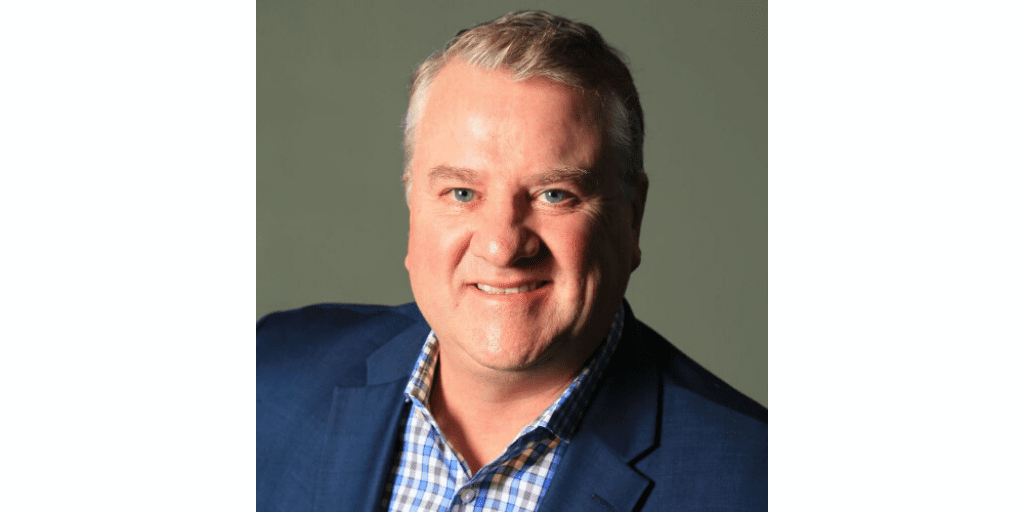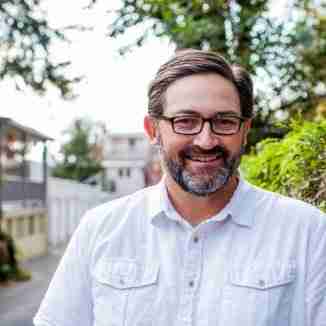
IN CONVERSATION: DR. JEFF STROVEL, CEO of VERALOX THERAPEUTICS
Veralox Therapeutics is a startup currently headquartered at the Frederick Innovation Technology Center, Inc. (FITCI) in Frederick, Maryland. As a small molecule therapeutics company focused on developing medicines targeting the arachidonic acid pathway, they have two drug products in development for the treatment of a rare blood disorder known as heparin-induced thrombocytopenia and thrombosis and Type 1 Diabetes.
The BioBuzz team recently caught up with Veralox’s CEO Dr. Jeff Strovel, who spoke about the genesis of Veralox, its advancing pipeline, the company’s recent milestones and its outlook for the future.
Tell our audience a bit about the founding of Veralox Therapeutics
I’ll never forget the day a trusted colleague, David Maloney, called me when I was driving back to my office. He told me he had been working to develop a clinical candidate that selectively targeted the arachidonic acid (AA) pathway through inhibition of a protein called 12-Lipoxygenase. He believed the program was ready to be brought into a company, and there was potential for broad therapeutic utility of the inhibitor, which was intriguing. I have heard a lot of drug program pitches and usually get a sense of where the holes are pretty quickly. In this case, we talked for 30 minutes and afterward I knew this program was ready for company formation. Our first product in development, VLX-1005, is for treatment of the rare blood disorder heparin-induced thrombocytopenia & thrombosis (HITT) which also happens to be the same blood disorder that nearly killed my father years ago. We started the company in 2017 along with Dave’s colleague from the NCATS (National Center for Advancing Translational Sciences) at the NIH, Matt Boxer, with our rare disease blood disorder drug as our lead candidate. I feel the stars really aligned for us and we have been charging ahead ever since.
Dave, in collaboration with several other partners, led the development of our lead candidate, VLX-1005 while he was a chemistry Group Leader at NCATS.
What is your life science background and what did you do prior to co-founding Veralox?
I hold a Ph.D. in Human Genetics from the University of Maryland School of Medicine. I then went on to be a clinical cytogenetics fellow at the National Cancer Institute Department of Pathology at the NIH. While at NIH I developed a drug target ID platform that got the interest of companies doing cancer drug discovery and I eventually joined a company called Avalon, where I worked in drug discovery and development for about 9 years and served my last two years as Head of Translational Oncology. I learned a great deal about the drug discovery and development process during my time there.
After Avalon I was part of a group of local life science veterans that co-founded the Clinical Research Organization (CRO) Noble Life Sciences. The CRO also served as a kind of incubator for new companies. We incubated several new companies like Neximmune and Convergene Pharmaceuticals, where I served as Chief Scientific Officer and President from 2011 to 2015 before taking on the Chief Executive role from 2015 to 2017. During that time I had met and worked with Dave and I left Convergene to start Veralox with him and our other co-founder Matthew Boxer.
What is Veralox’s lead drug candidate, what disease does it target and where does it sit in the development process?
Our lead drug candidate is for the treatment of patients with HITT, which is a rare, life-threatening disease caused by an immune reaction to Heparin. This drug candidate is a small molecule product that inhibits the 12-lipoxygenase (12-LOX) enzyme which produces 12-HETE. Both 12-LOX and 12-HETE are implicated in numerous diseases. The only FDA-approved drug for HIT/HITT, argatroban, doesn’t treat the underlying cause of the disease and has significant potential side effects leaving a significant unmet need.
There are approximately 50,000 people that will be diagnosed with HIT/HITT in the US this year but the number of those treated for this disease is approximately 150,000 annually. HIT takes time to diagnose and doctors can’t wait for a definitive diagnosis to make treatment decisions. If patients are suspected of having the disease they must be treated immediately given the risk for deadly thrombosis. The current approved treatment, argatroban, can cause major bleeds which in and of itself can lead to death in these patients. Better drugs are needed that address the pathology of the disease without contributing potentially lethal side effects.
Our HIT treatment inhibits the underlying pathophysiology of HITT to halt the aberrant immune response driving the disease and essentially offering the potential of a curative modality.
We’ve been strategically focused on HIT/HITT, but our approach has potential for a number of other indications. For our HIT/HITT drug candidate, we’ve submitted our Orphan Drug application and our pre-IND (Investigational New Drug) briefing book to the FDA; we expect to have our GMP material soon and to start GLP toxicology studies in the second quarter of this year. Our team expects to submit the IND for our lead candidate by the end of 2020. We are also co-developing a small molecule, orally administered drug product. We plan to advance this candidate for the treatment for Type 1 Diabetes, which is about a year behind our HIT/HITT clinical candidate.
What are some recent Veralox funding milestones and what are the company’s next funding steps?
We’ve had success raising capital from grants and venture capital groups. Veralox received about 300K from NIH’s Small Business Innovation Research (SBIR) Fund, Phase I, and $300K from NIH’s Small Business Technology Transfer (STTR) Fund. We also recently closed a $5.4M seed round that was co-led by Sanofi Ventures and the JDRF T1D Fund and included participation from the VTC Innovation and VTC Seed Fund, the Maryland Momentum Fund, the University of Vermont Health Network and TEDCO.
We are currently raising Series A funding to support clinical development of VLX-1005 for HITT and advance our second drug product for treatment of Type 1 Diabetes into clinical trials. We’ve initiated discussions with several large venture capital firms all of which could lead our funding round and have the full support of our current investors in the process.
What can you tell us about your experience at FITCI and as a startup in the Frederick life science ecosystem?
I’ve had experiences with other incubators, some of which no longer exist, but there’s no comparison to FITCI. They offer great support to emerging companies that desperately need it at the early stages. I have been at other incubators that give you a physical place to do business, but FITCI really keeps an eye on you. The FITCI team helps you solve problems and they offer quarterly meetings for the CEO’s to meet with groups of successful business people who can offer advice and provide mentorship for those in need. These mentors might not be in therapeutics but they’ve done this before and can really help.
I really love Frederick because, to me, the area is just like a startup. It’s really going somewhere. FITCI has two locations, but whenever we meet with people, we use the Market Street location in downtown Frederick. It’s a nice ‘face’ to show off to people from outside of the area. Our time at FITCI is nearing its end because of our funding success, but when we graduate from the incubator, the plan is to stay in Frederick. We’ve already been looking at a few places.
What are some near term challenges for Veralox and where do you see the company being in three to five years?
Our biggest challenge is developing a completely novel first-in-class product. There’s no blueprint or recipe one can exactly follow, and it is challenging. This is, however, what the Veralox team is trained to do and we are well prepared and excited by the challenge and promise of developing a new treatment that can drastically improve and perhaps save the lives of people suffering from a terrible disease.
We’re also currently looking to hire a Chief Medical Officer soon. Finding the best talent is always a challenge, but I know we’ll be able to find the right person.
In three to five years, our goal is to have several products in the clinic and possibly an approved HIT/HITT drug on the market. Veralox has the potential to become an anchor life science company in the region. But for now, I’d like Veralox to be known as the company that did what they said they’d do — we’re community-minded and will continue to work hard to make a difference in the lives of patients with debilitating diseases.
- About the Author
- Latest Posts
Steve brings nearly twenty years of experience in marketing and content creation to the WorkForce Genetics team. He loves writing engaging content and working with partners, companies, and individuals to share their unique stories and showcase their work. Steve holds a BA in English from Providence College and an MA in American Literature from Montclair State University. He lives in Frederick, Maryland with his wife, two sons, and the family dog.





